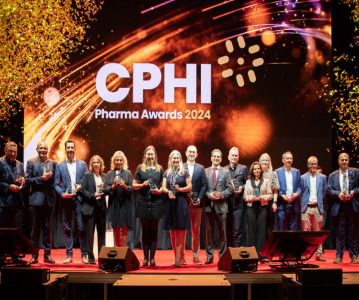Pharma predictions for 2017: the good, the bad, and the Donald

Orphan drugs, CMO continuous manufacturing and developing world sales offer biggest revenue opportunities.
The CPHI Worldwide expert panel predicts pharma’s biggest opportunities and threats in 2017 – the wider industry, attendees and exhibitors increasingly look to the CPHI global events as a key indicator of future trends and partnerships. The panel forecasts that with the traditional blockbuster drug era widely considered to have passed, orphan drugs and neglected diseases are, in the short-term, likely to deliver pharma’s best revenue opportunities. Over the medium term, developing world economies and cost reductions from new technologies and working practices, such as Quality by Design (QbD) and continuous processing, should help sustain profits.
Significantly, continuous processing and QbD will also lead a “paradigm shift at instrument companies” with new models – particularly in spectroscopy – specially created for process monitoring and control. CPHI expert, Emil W. Ciurczak, President of Doramaxx Consulting, added: “The instrument companies will cooperate with software vendors to produce a more cohesive operating system(s) that will allow multiple instruments to smoothly work in unison for PAT/QbD applications. In many ways, this will be similar to the unification of chromatography terms/specifications and the emergence of international standards for dissolution testing”.
Continuous manufacturing (CM), having seen several pharma companies adopt the technology in 2016, is envisaged to enter a new phase of implementation as CROs and CMOs adopt it as quickly as large pharma companies. The reasons for this shift are the wider funding environment that is being created for orphan drugs, with foundations (e.g., Clinton Foundation) and smaller patent cohorts meaning development and production is quicker with CM. The shorter turnaround time will also aid CMOs with the larger number of products from client companies. R&D and clinical trials are also being shifted to CROs as larger companies shed sites and personnel.
CPHI expert Girish Malhotra, President at EPCOT International, agreed that drugs for orphan and neglected diseases ‘might give a short-term jump’, however affordability will remain a concern for sustained revenue growth. He warns, that unless new therapies are created for the global population at affordable prices there will be challenges, as developing ‘marginally better new drugs will not deliver sustained revenue increases’ in the long term. Instead, he forecasts that the two biggest opportunities for pharma and generic companies will come from the developing economies and process improvements.
“Pharma has to drive innovation from inside and excel in creating efficient drug development, process and technology innovation in manufacturing and the supply chain. Simplified and innovative processes will produce quality products. Moving away from present practices of quality assurance after the fact can save significant monies,” added Malhotra.
Gil Roth, President of the PBOA, states it’s too early to make definitive predictions about the effect Donald Trump’s administration will have on the US healthcare and CDMO sectors, especially given his recent commitment to ‘bring-down drug prices’, which was post election and contains no specific granularity as of yet. However, with a preference for protectionist strategies, a change in tax status for overseas revenues could well trigger a spate of reinvestment in US facilities by big pharma as well as greater domestic M&A activity.
“Some of the President-Elect's statements on immigration could become problematic if they keep high-value scientific personnel from coming to the US. His appointment for FDA Commissioner could shape policy there in ways that benefit or hinder pharma and CMOs. Congress' path to repeal and replace the Affordable Care Act leads through a minefield. It's all too vague at this point” concluded Roth.
“The overall pharma industry is in very good health as we enter 2017 and our experts highlight a number of good opportunities that should sustain growth in the near and medium term. Innovation in our industry is also reaching new levels and technologies that have been in their infancy in recent years look well set to permeate through the supply chain. Collaboration, supply chain control and partnering will remain essential to the sector’s health and we expect to welcome wider audiences and newer exhibitors to CPHI events throughout the globe,” said Chris Kilbee, Group Director Pharma at UBM EMEA.
Related News
-
News Women in Pharma: Moving beyond discussions and into best practice at CPHI Milan
In this second CPHI Milan special of our monthly series, we cover the key takeaways from the Diversity & Wellbeing track held on October 10, 2024. -
News CPHI Milan post-show panel: Importance of advocacy projects in business
In the Packaging Innovation Theatre from CPHI Milan this year, sponsored by the Alliance of the RTU, we held a panel on: ‘Elevating Brand Perception: Integrating Advocacy Projects into Business Strategies’. The session aimed to explore how ... -
News CPHI Pharma Awards 2024: Meet the winners from the CPHI Celebration
This year we had a lot to celebrate, the 35th Anniversary of CPHI, and our esteemed award winners, of which we included two additional categories this year, the Future Leader award, and Woman of the Year award. -
News CPHI Milan 2024 - From the Floor
Milan and CPHI welcome you to 2024 CPHI Milan! As we celebrate the 35th edition of our flagship CPHI show, editors Vivian Xie and Lucy Chard bring you the latest from the show floor, conference sessions, and innovative solutions from all exhibitors, at... -
News A Day in the Life of a Pharma Event Director
The Day in the Life of series has covered most of the pharmaceutical supply chain looking through the eyes of the people working in the different fields, from R&D to manufacturing. What we haven't seen yet, is the role that non-pharma companies can... -
News On Track at CPHI Milan: The RTU Alliance on the importance of packaging innovation
As CPHI Milan gets ever closer, we sat down with some of the sponsors for this year’s conference tracks to discuss the most pressing topics in pharma, and the innovations that are set to shake up the industry. -
News CPHI Milan Speaker Spotlight: The microbiome and investing in future therapies
In the run-up to CPHI Milan, we sit down with some of the experts and thought-leaders speaking at this year’s conference. -
News On Track at CPHI Milan: Thermo Fisher Scientific Track Sponsor interview
With CPHI Milan just around the corner, we sat down with some of the sponsors for this year’s conference tracks to discuss the most pressing topics in pharma.
Position your company at the heart of the global Pharma industry with a CPHI Online membership
-
Your products and solutions visible to thousands of visitors within the largest Pharma marketplace
-
Generate high-quality, engaged leads for your business, all year round
-
Promote your business as the industry’s thought-leader by hosting your reports, brochures and videos within your profile
-
Your company’s profile boosted at all participating CPHI events
-
An easy-to-use platform with a detailed dashboard showing your leads and performance







